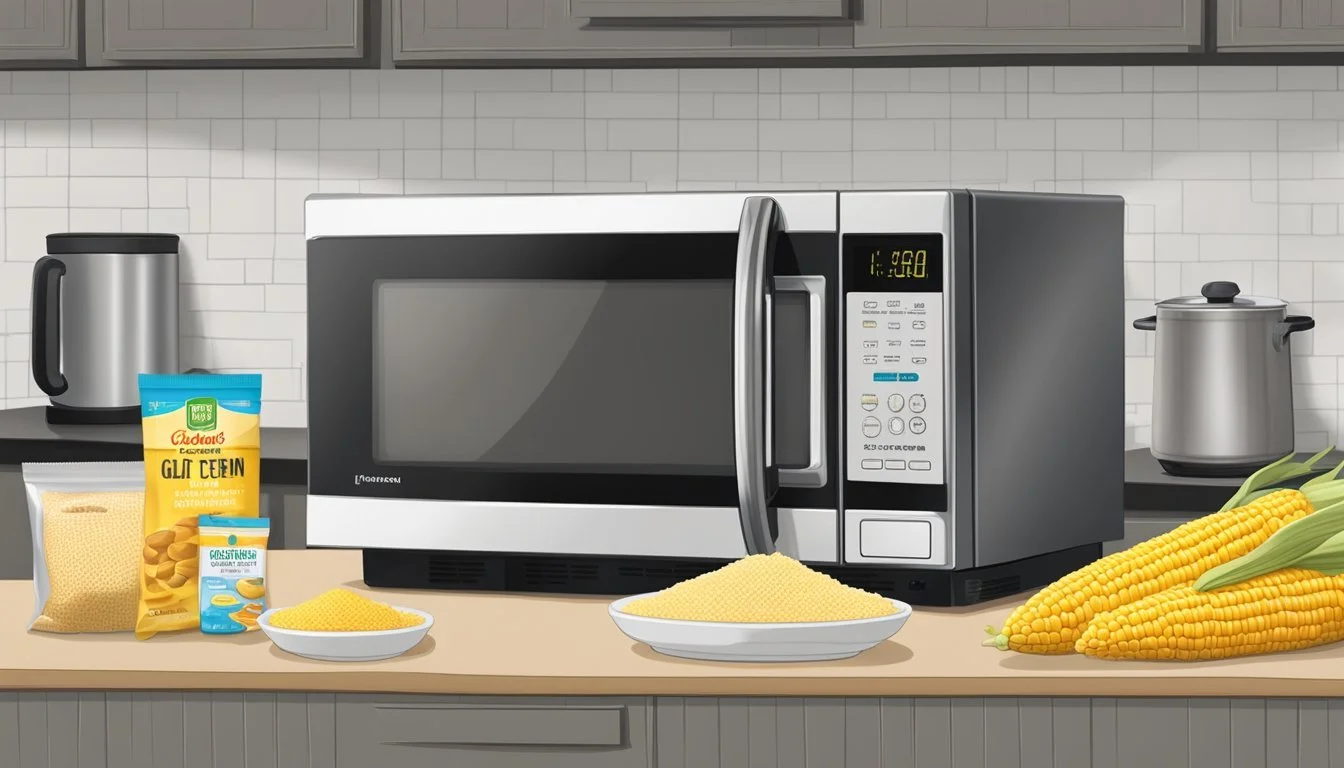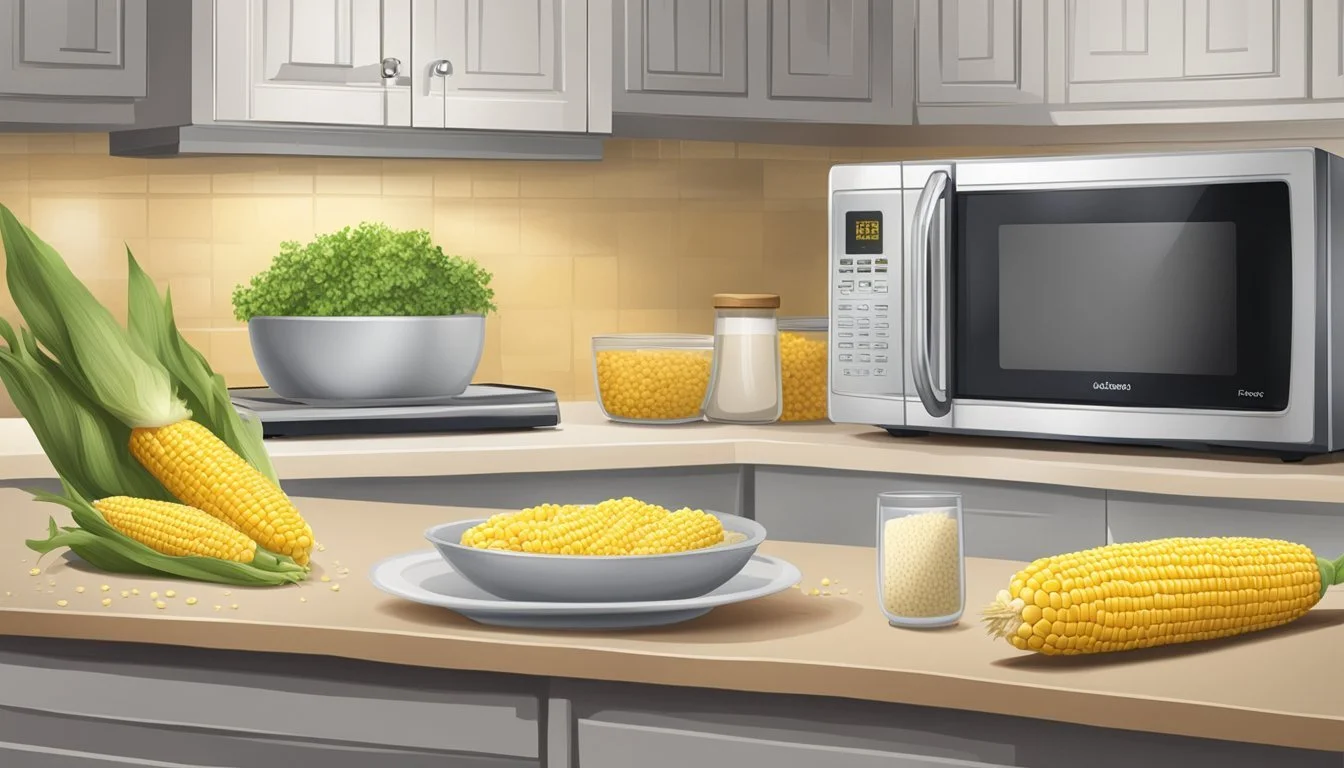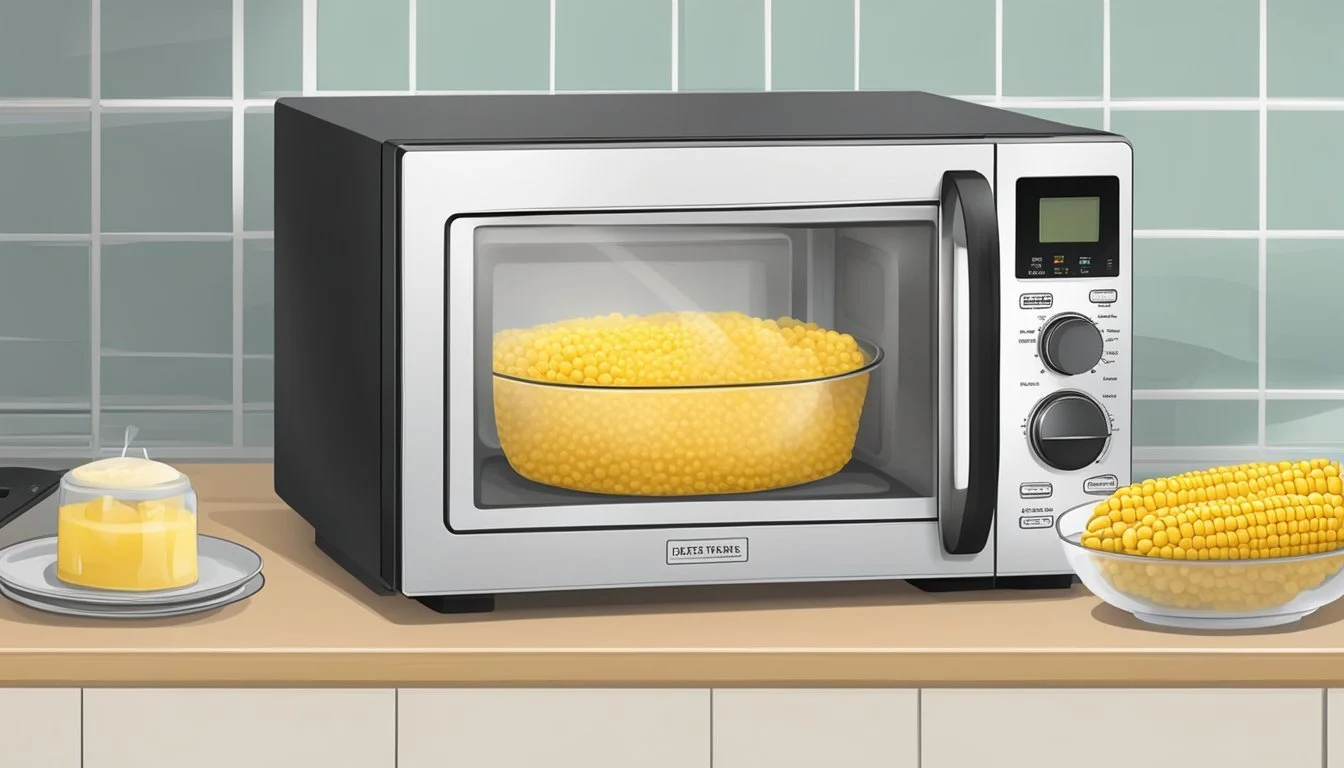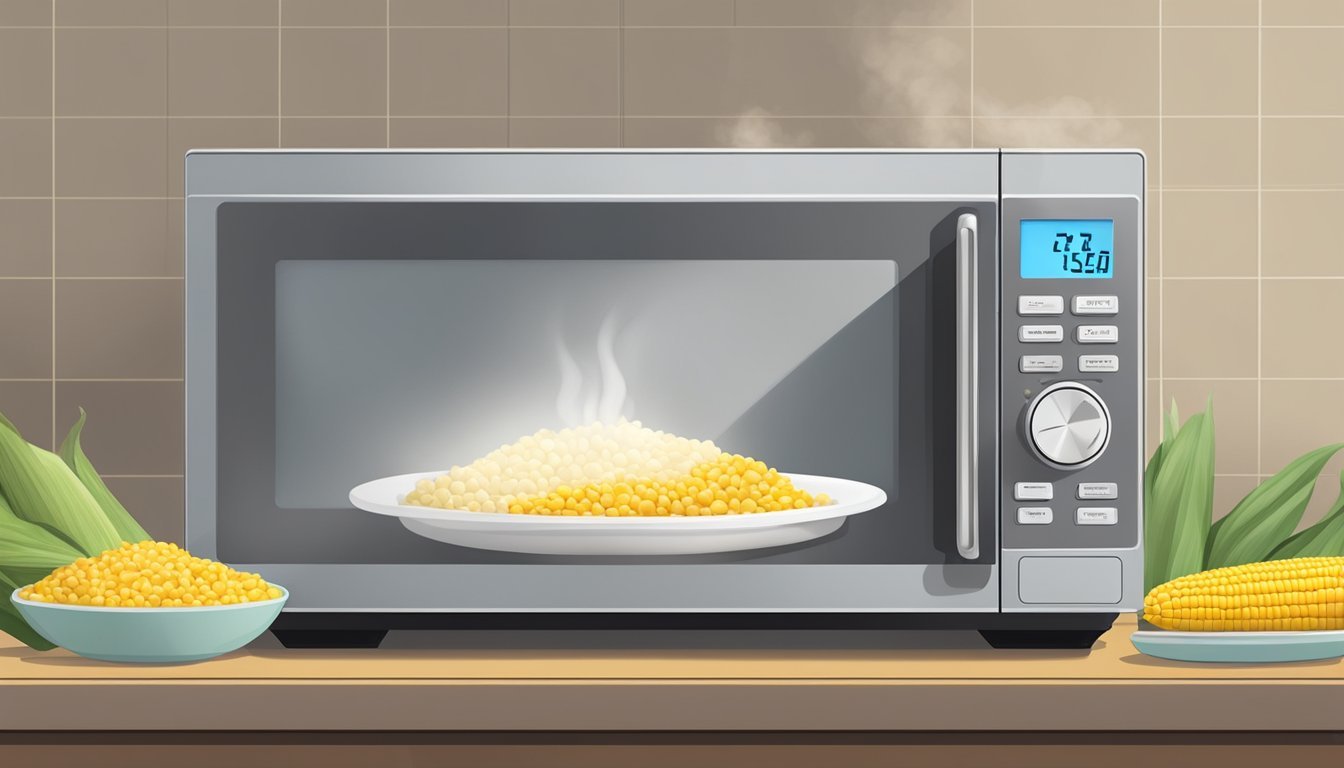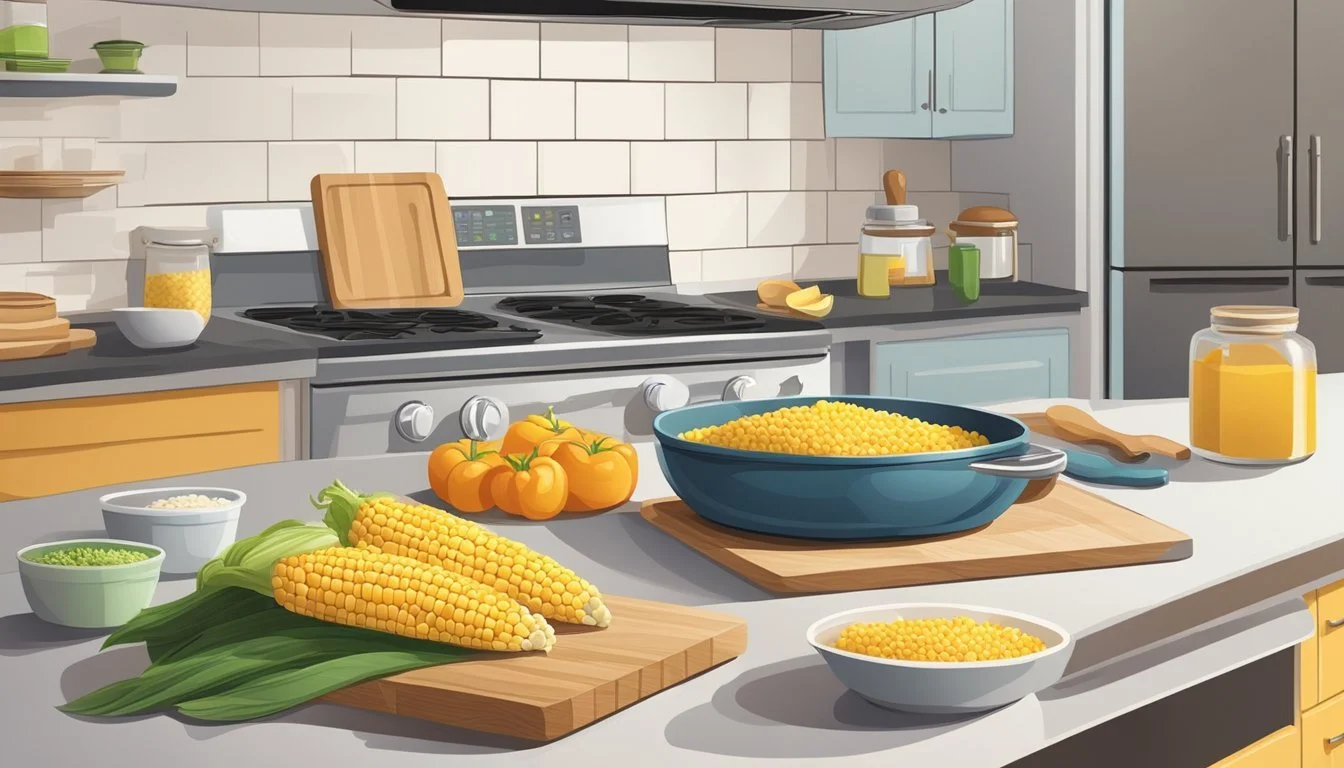How to Reheat Gluten-Free Corn for Best Flavor and Texture
Reheating gluten-free corn can be a simple yet rewarding process if done correctly, retaining both flavor and texture. To reheat gluten-free corn effectively, you should preheat your oven to 350°F, place the corn in an oven-safe dish, and cover it with aluminum foil to prevent it from drying out. This method works well for various gluten-free corn recipes, ensuring that the corn remains succulent and delicious.
Whether reheating gluten-free corn casserole, creamed corn, or corn muffins, following specific steps guarantees the best results. Use melted butter brushed over corn muffins or other similar dishes to maintain moisture. Covering creamed corn and casseroles with foil helps in evenly reheating and preserving the creamy consistency.
Reheating gluten-free corn dishes doesn't have to be daunting. The use of a consistent temperature and proper covering techniques ensures your gluten-free recipes retain their original delightful taste and texture, making every bite as enjoyable as when freshly made.
Understanding Gluten-Free Corn Products
For those dealing with celiac disease or gluten sensitivity, understanding the specifics of gluten-free corn products is crucial. Different types of these products cater to various dietary needs and cooking preferences.
Types of Gluten-Free Corn Products
There are several gluten-free corn products available on the market. Gluten-free cornmeal and gluten-free flour blends are commonly used to make items such as gluten-free cornbread and gluten-free corn muffins. These products are made using purified corn to ensure no traces of gluten.
Xanthan gum is often added to gluten-free cornbread and muffins to mimic the elasticity that gluten provides. This ensures that the texture remains soft and not crumbly. Cornmeal, a key ingredient, is processed to eliminate any possibility of gluten contamination.
Benefits of Opting for Gluten-Free
Using gluten-free corn products offers significant health benefits for those with gluten sensitivities or celiac disease. Gluten-free flour and cornmeal reduce the risk of adverse reactions and help maintain digestive health. These products also provide essential nutrients, such as fiber and antioxidants.
Consumers also find that gluten-free corn products are diverse and versatile, fitting into various recipes easily. Whether making baked goods or enhancing dishes, gluten-free corn products support a balanced, enjoyable diet.
Essential Ingredients and Substitutes
When making gluten-free corn recipes, understanding the key ingredients and their potential substitutes is crucial. This ensures that the dish remains both delicious and compatible with various dietary needs.
Core Ingredients for Gluten-Free Corn Recipes
Most gluten-free corn recipes feature essential ingredients that provide structure, moisture, and flavor.
Gluten-Free Flour: This works as a base to give structure to the recipe. Options like rice flour or a blend specifically marked as gluten-free are common.
Creamed Corn and Corn Kernels: These add texture and corn flavor. Canned or fresh versions can be used.
Butter or Oil: Adds richness and moisture. Butter is traditional, but oil can be a good dairy-free option.
Eggs: Provide binding and fluffiness.
Milk or Non-Dairy Milk: Keeps the batter moist. Dairy-free options include almond or soy milk.
Baking Powder: Ensures the mixture rises properly.
Sugar and Honey: Add sweetness. Honey also contributes a slightly richer flavor.
Salt: Enhances overall taste.
Substitutes for Common Allergens
Adjustments can be made to accommodate other dietary restrictions without compromising on taste and texture.
Dairy Substitutes:
Butter: Can be replaced with oils like coconut or olive oil.
Milk: Non-dairy options such as almond, coconut, or soy milk work well.
Egg Substitutes:
Egg Replacers: Commercial egg replacers or a combination of flaxseed meal and water can be used.
Applesauce or Mashed Bananas: Suitable for some recipes to provide moisture and binding.
Gluten-Free Flour Alternatives:
Rice Flour or Almond Flour: Other gluten-free options that can be used depending on the recipe requirements.
Cornmeal: Often used alongside or in place of gluten-free flour for its texture.
These substitutes ensure that everyone can enjoy gluten-free corn recipes without compromising on dietary needs, while still achieving a delicious and satisfying outcome.
Preparation Before Reheating
Before reheating gluten-free corn, ensure it has been stored correctly and is prepped for optimal flavor and texture. Careful storage and a few pre-reheating steps can make all the difference.
Proper Storage Techniques
Proper storage starts with an airtight container to keep leftover corn fresh. This minimizes air exposure, which can dry out the kernels. If storing in the fridge, place the corn in a container or wrap it tightly in plastic wrap. Label the date on the container so you know how long it has been stored.
For long-term storage, freezing is a great option. Place the corn in a freezer-safe bag or container, and remove as much air as possible before sealing. Frozen corn should be properly thawed at room temperature or in the refrigerator before reheating.
Pre-Reheating Tips
Before reheating, check the corn for any excess moisture that could lead to sogginess. Pat dry with a paper towel if necessary. If microwaving, consider adding a damp towel to keep moisture during reheating.
When using the oven or air fryer, preheat your appliance to ensure even heating. For stovetop reheating, bring water to a boil before adding the corn. Following these pre-reheating tips helps maintain the texture and flavor of your gluten-free corn.
Reheating Methods for Gluten-Free Corn Dishes
To retain the sweet flavor and optimal texture of gluten-free corn dishes, specific reheating techniques are essential. There are various reheating methods, each suited for different needs: maintaining texture, achieving quick results, and using alternative tools.
Oven Reheating for Optimal Texture
Instructions: Preheat the oven to 350°F (175°C). Place the corn dish in an oven-safe container.
Preparation: Cover the dish with aluminum foil to retain moisture. Bake for about 20-25 minutes until heated through.
Outcome: This method ensures the corn remains moist and achieves a golden brown finish. It's particularly effective for corn casseroles or baked corn dishes.
Microwave Reheating for Convenience
Instructions: Place the corn dish on a microwave-safe plate. Cover lightly with a damp towel.
Preparation: Heat in 10-20 second intervals. Stir or rearrange the dish after each interval to ensure even heating.
Outcome: This quick reheating method preserves moisture but may slightly alter the texture. Ideal for those needing a fast reheating solution.
Alternative Reheating Methods
Grill: Preheat the grill and wrap the corn in aluminum foil. Grill for 5-10 minutes, turning occasionally.
Toaster Oven: Similar to oven reheating, but suited for smaller portions. Preheat to 350°F (175°C), cover with foil, and heat for 15-20 minutes.
Skillet: Heat the skillet over medium heat. Add a small amount of butter or oil and reheat the corn, stirring occasionally for even warming. This method may add a slight crispness.
Each method offers a unique benefit, whether it’s the convenience of a microwave, the texture preservation of an oven, or the enhanced flavor from a grill. Adjust based on the dish type and personal preference for best results.
Serving Suggestions
Reheated gluten-free corn can be versatile and delightful. Here are some specific pairing ideas and toppings that elevate the corn, enhancing its flavors and making it suitable for various occasions.
Pairing with Dishes and Occasions
Reheated gluten-free corn pairs beautifully with Holiday Meals like Thanksgiving and Christmas. It complements turkey, ham, and even Sweet Potato Casserole. The creamy texture of the reheated corn also makes it an excellent side dish for Corn Casserole.
For a more casual meal, serve reheated corn alongside Chili or as a comforting addition to a hearty Soup. Its sweetness and texture balance spicy and savory notes, making it a favorite for family dinners. For celebratory events, consider serving it with Bacon-wrapped dishes or barbecue.
Add-ons and Toppings
Enhance reheated gluten-free corn with various Add-ons and Toppings for added flavor and texture. A dollop of Butter not only adds richness but also melts into the corn, making it even more delicious.
Adding Shredded Cheese can create a creamy and savory profile, perfect for kids and adults alike. Drizzle Honey for a touch of sweetness or mix in some Sour Cream for a tangy finish. Bacon bits provide a smoky crunch, while fresh herbs like parsley or chives add a touch of freshness.
These additions not only enhance the taste but also offer a variety of flavors that cater to different preferences.
Maintaining Quality and Safety
Ensuring food safety and maximizing the quality of leftovers are crucial when reheating gluten-free corn. Taking the right steps can preserve both nutrition and flavor while preventing foodborne illness.
Ensuring Food Safety
When reheating gluten-free corn, temperature control is essential to avoid foodborne illness. Reheat corn to an internal temperature of 165°F (74°C) to kill any harmful bacteria. Use a food thermometer to check this accurately.
Store leftover corn in an airtight container in the refrigerator to maintain freshness and reduce contamination risk. Consume within 3-4 days for best safety. If freezing, ensure it’s in a tightly sealed container or heavy-duty freezer bag to prevent freezer burn and maintain quality.
Maximizing the Quality of Leftovers
To maintain the texture and flavor of reheated corn, methods like steaming, microwaving, and oven baking are recommended. Microwaving with a damp towel helps preserve moisture and prevents kernels from bursting. Oven reheating at 400°F with a bit of water can steam the corn slightly, enhancing its tenderness.
For flavor maintenance, consider adding a bit of butter or seasoning after reheating. Store corn in airtight containers to lock in freshness and nutrients, ensuring it doesn’t dry out and remains as palatable as the first serving.
By following these guidelines, reheated gluten-free corn can remain both delicious and safe to eat.
Creating Variations and Expanding Recipes
Exploring variations of gluten-free corn dishes allows for creativity in the kitchen. Incorporating gluten-free corn into other recipes brings versatility and new flavors to many meals.
Variations of Gluten-Free Corn Dishes
There are numerous ways to transform basic gluten-free corn into unique dishes. For example, Corn Pudding is a sweet and savory delight often enjoyed at Thanksgiving. It combines creamed corn, butter, and eggs.
For those who enjoy savory dishes, Cornbread Stuffing is perfect. It typically includes gluten-free cornbread mix, celery, onions, and broth, creating a flavorful stuffing.
Another favorite is Corn Souffle, which is a light, airy dish made with whipped egg whites folded into the corn mixture. It's a great way to elevate a basic corn recipe.
Incorporating Gluten-Free Corn into Other Recipes
Gluten-free corn can easily become a part of other recipes. It can be added to stuffings to create flavorful sides such as Cornbread Stuffing or even unique holiday stuffing variations by including sausage or cranberries.
Corn Spoonbread is another example, combining cornmeal, creamed corn, and eggs into a dense, custard-like dish. This dish can be served as a side or even as a main course with added protein like shredded chicken.
Using gluten-free flour and cornmeal, you can bake Gluten-Free Corn Casserole. This versatile dish can be customized by adding ingredients like jalapeños for heat, cheddar cheese for richness, or diced bell peppers for a crunch.
Experimenting with these variations and incorporating them into broader recipes expands the versatility, making the meals both nutritious and exciting.
Troubleshooting Common Issues
When reheating gluten-free corn, achieving the right texture and flavor can be tricky. Below are some common issues and solutions to help you ensure both sweetness and savoriness in your dish.
Texture and Moisture Challenges
Texture and moisture are essential factors when reheating gluten-free corn.
One common issue is dryness. Microwaving can help, but wrapping the corn in a damp towel and reheating in short intervals can prevent kernels from becoming tough. Steaming the corn for about 5-7 minutes also helps maintain moisture.
Sometimes the corn may become too moist and soggy. In this case, baking or broiling can rectify this. Place the corn in a preheated oven at 400°F for about 5 minutes, checking for desired crispness.
A crumbly texture is another challenge. Avoid overcooking by carefully monitoring the reheating process. Grilling can provide a slight char that enhances texture without drying it out.
Flavor Adjustments
Balancing the sweet and savory flavors when reheating gluten-free corn is crucial.
If the reheated corn lacks sweetness, consider adding a small amount of sugar or honey while it is warm. This can amplify natural sweetness without overpowering other flavors.
For a more savory profile, a sprinkle of salt or seasoned butter can enhance the taste. Adding herbs like parsley or thyme can also elevate the savory tones.
Sometimes, reheated corn can lose some of its initial flavor. Fresh lime juice or a dash of smoked paprika can restore and even improve the dish’s flavor.
Carefully balance these adjustments to avoid overwhelming the natural taste of the corn.
Advance Preparation and Make-Ahead Tips
Making gluten-free corn dishes ahead of time can save effort and ensure delicious meals are ready when needed. Efficient strategies involve proper** meal prep, bulk cooking, and storage solutions**.
Make-Ahead Strategies
When preparing gluten-free corn, such as corn casserole or creamed corn, advance preparation can be a game changer. Follow the recipe steps up to the point where the dish is ready to go into the oven. Allow it to cool completely before storing.
For maximum convenience, portion the corn dishes into individual servings. Use airtight containers to keep them fresh. These containers are crucial for maintaining quality and preventing any contamination.
Creamed corn can be whisked and cooled in the fridge, perfect for reheating later. Gluten-free cornbread can be prepared ahead and stored similarly, ensuring it retains its flavor and texture.
Cooking in Bulk and Storing
Bulk cooking is ideal for those looking to minimize kitchen time. When cooking gluten-free corn in large batches, ensure each component is mixed thoroughly. Once cooked, separate portions into freezer-friendly containers.
For extended storage, freezing is effective. Make sure the corn dishes are fully cooled before freezing. Label each container with the date to keep track of their shelf life.
When ready to reheat, take out the desired portion and thaw it in the fridge overnight. Reheat in the oven or microwave until warmed through, ensuring even heating. Proper storage and reheating maintain the dish’s integrity and taste, ready to serve whenever needed.


